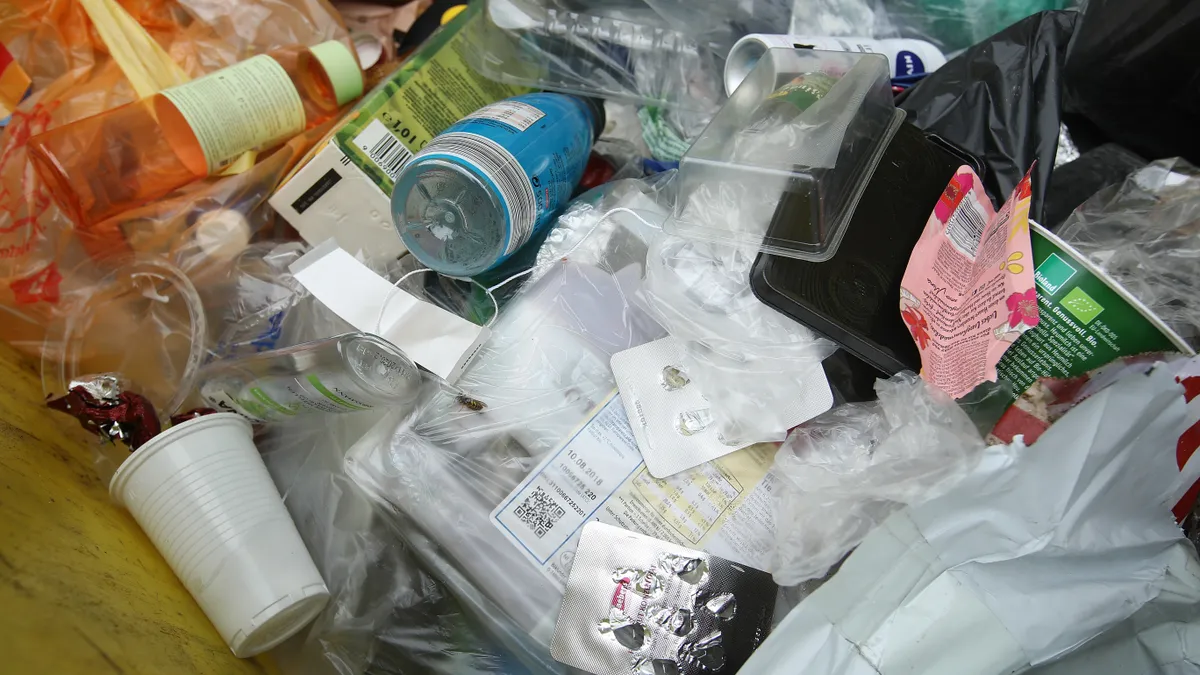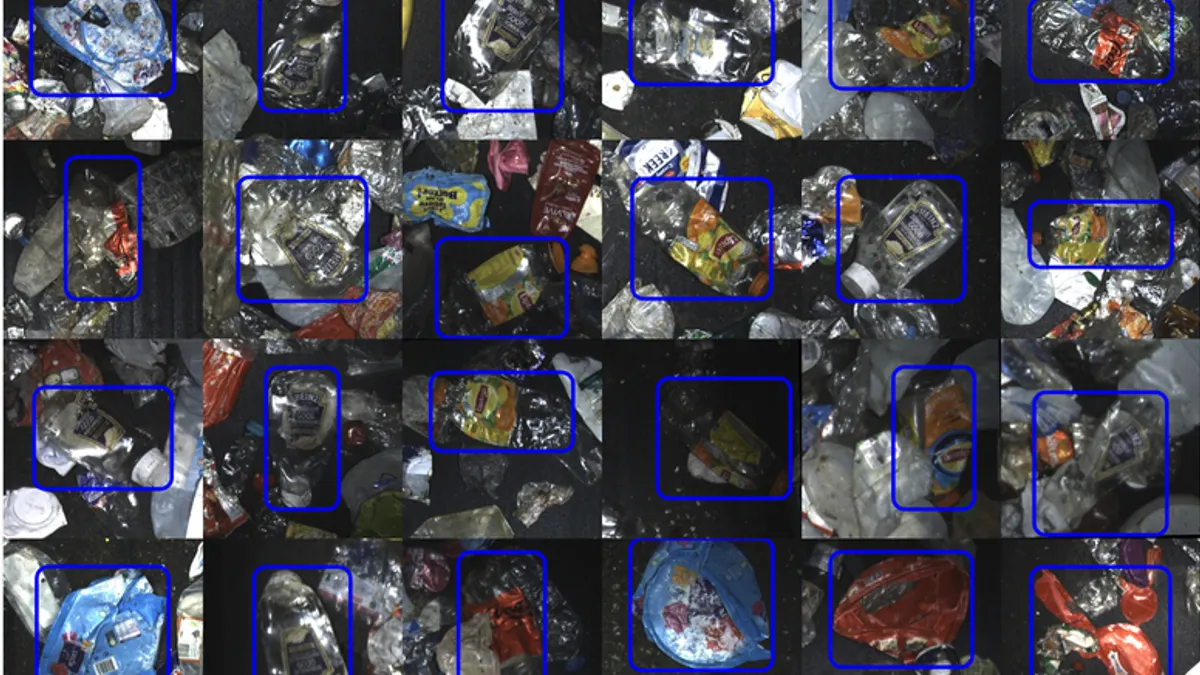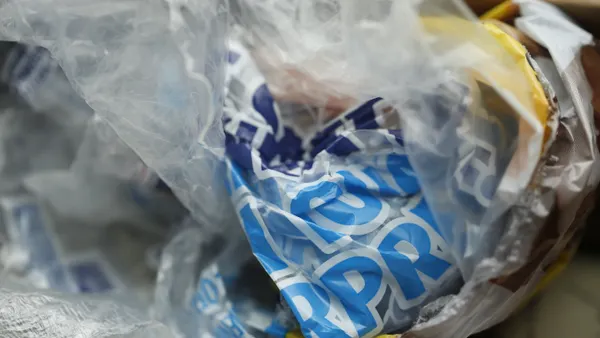Editor's Note: This piece was written by Kyla Fisher, program manager at AMERIPEN. The opinions represented in this piece are independent of Waste Dive's views.
There is an increasing awareness that the way we use and manage materials as a society has a significant impact on the types of environmental pressures we face. Because materials interlink so deeply with our environmental, economic and social structures, taking a systems approach to their management provides us with a deeper understanding, and a broader toolkit, through which to make change.
A 2009 U.S. EPA report, “Opportunities to Reduce Greenhouse Gas Emissions through Materials and Land Management Practices” demonstrates exactly how this system approach can shift how we view waste management in the U.S. The authors note that emissions generated by landfill account for 1.8% of total U.S. GHG emissions — but this shifts to 42% when we measure at GHG emissions from a systems perspective (extraction, harvesting, processing, transportation, use and end of life by material). While GHG emissions are only one environmental metric, if we consider them as a proxy for other impacts the message is clear: shifting our focus away from managing end of life towards managing cumulative environmental impact, material management strategies could have a significant role to play in helping states and cities reduce environmental impacts.
In tackling materials management, most states set a recycling target. This is typically expressed as a percentage of total materials diverted from landfill towards recycling and/or composting. Measurement of this goal is always based on tons diverted. This is a simple metric through which to measure success since we track material disposed by weight and sell bales of recyclables by tonnage. However weight-based goals provide limited insight into the true impact of recycling and do nothing to address economic and social impacts and opportunities.
There is a common refrain within the recycling industry that the nature of the waste stream is shifting towards lighter materials. This is a cumulative result of light-weighting, material substitute and shifting demographics. An analysis by Adam Gendell of the Sustainable Packaging Coalition notes that while the total volume of packaging generated has seen a steady increase, when we break down packaging per capita, it has decreased from a high of 0.27 tons per person in 2000 to 0.24 tons per person in 2013.
A 10-year study of recycled material in one U.S. city noted a 37% increase in materials when measured by cubic yards, but only an 8% increase in cumulative tonnage, according to Waste Management. Essentially, the recycling stream has become less dense but more voluminous. This means we may be capturing more material (which is not reflected via this metric), we’re reducing our cumulative material use (also missed via this metric) and we’re missing the potential environmental impact of additional transportation, processing and costs which may occur as a result of the increased volume.
Understanding the materials in the landfill which generate, and result in, the greatest amount of emissions over their lifecycle could help us identify how best to develop strategies to target our limited resources. Using food waste as an example, both at a national and global level food waste is estimated to make up one-third of materials found in landfill. The Food and Agriculture Organization of the United Nations (FAO), estimates if food loss and waste were its own country, it would be the world’s third-largest emitter—surpassed only by China and the United States.
Understanding the materials in the landfill which generate, and result in, the greatest amount of emissions over their lifecycle could help us identify how best to develop strategies to target our limited resources.

But most of this impact comes not from the decomposition of food waste but rather upstream in the production, harvesting and transportation stage. This is important to understand as we apply goals to manage our waste. Preventing one ton of food waste would result in a sixfold reduction in GHG emissions over composting and sevenfold reduction over anaerobic digestion. The most effective strategy would in fact be source reduction — not end of life management. Yet our waste management goals, as they are currently set, don’t permit for our states and municipalities to address this. In setting goals based on tons diverted, the emphasis then lies on end of life solutions and tonnage shifted — anaerobic digestion and composting would be considered the successful outcome — not source reduction.
Additionally, through the lens of weight-based diversion goals, there would be limited, or no, recognition of the role packaging might play in reducing food waste. Recent studies on the impact of packaging in fresh food suggests that one day of additional shelf life has the potential to reduce avoidable household food waste by 200,000 metric tons, or the equivalent of reducing avoidable food waste in the U.K. by 5%.
A number of different assessments of packaging’s role in reducing food waste demonstrated that an increase of packaging in the waste stream resulting in a decrease in food waste to the landfill would have a significant impact on GHG emissions. The application however of a high weight-based recycling goal in absence of this systems lens may inadvertently incent the substitution of a recyclable, but perhaps less effective, package in reducing cumulative landfill waste.
As states seek new ways to manage material discards, we believe this creates the perfect opportunity to expand the discussion on diversion goals. Is our true objective to divert material away from the landfill or is it about reducing cumulative environmental impact and ensuring we direct materials to their highest and best use across the lifecycle? If it is the latter, then a systems perspective that permits for the measurement of all practices across the waste hierarchy may be a more effective approach.

















